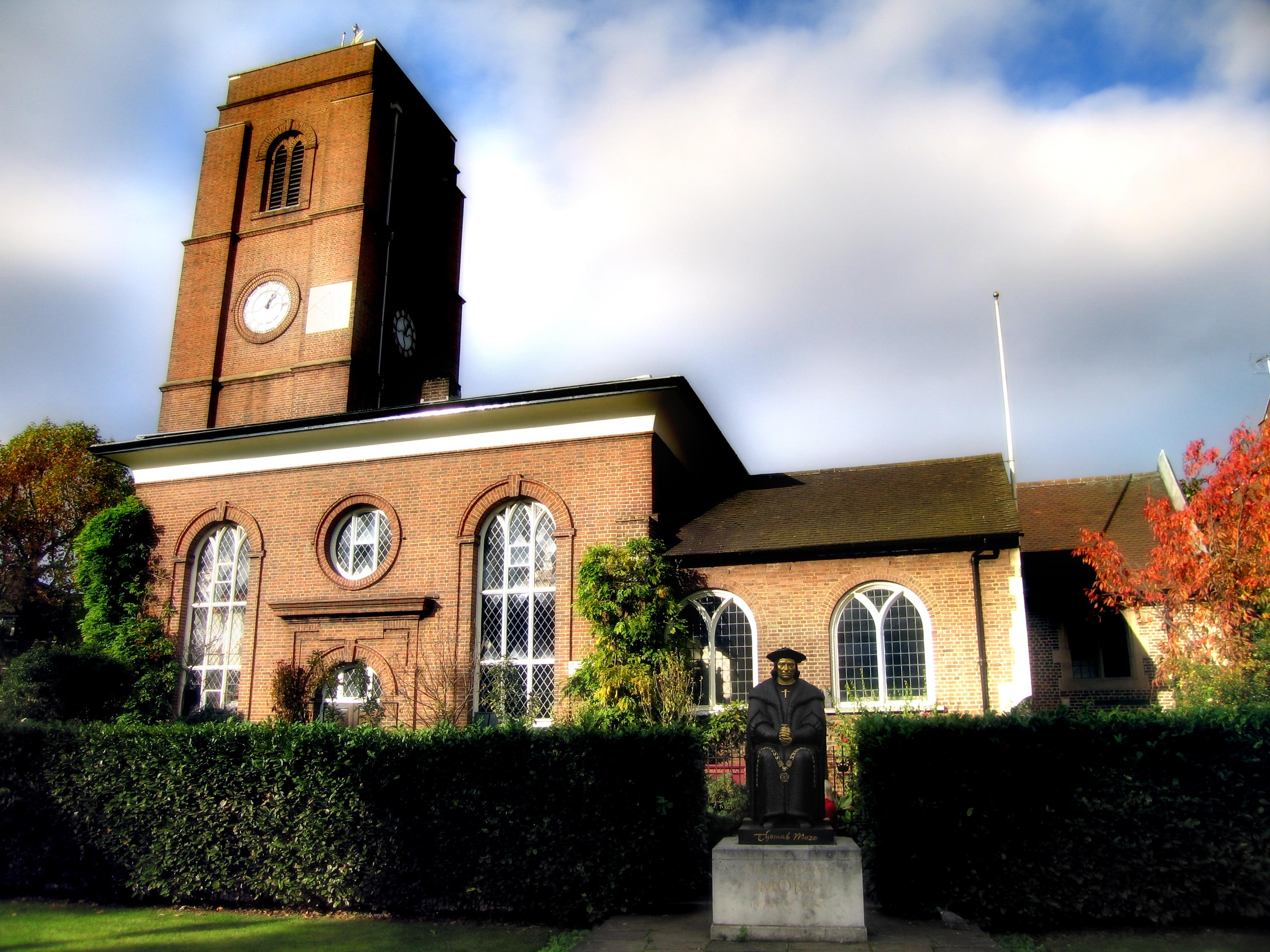There was almost certainly a church in this spot by the 8th century, and it served as the parish church for Chelsea before the area was absorbed into the growing London metropolis.
Sometime in the 13th century a new stone church was erected. The earliest part of the church was the chancel, to which north and south chapels were added around 1325. The nave and the tower did not follow for several centuries; around 1670.
The north chapel was built by the Lawrence family, lords of the manor of Chelsea. The south chapel was built in 1528 by Sir Thomas More as a private chapel. The pillars flanking the chancel entrance were designed by Hans Holbein, the court painter most famous for his portraits of Henry VIII. The medieval church was devastated by a WWII bomb, and almost every part of the structure was heavily damaged except for the More Chapel.
Chelsea Old Church is claimed to have the most impressive array of monuments outside Westminster Abbey. One of the most easily viewed is the ornate 1753 memorial to Sir Hans Sloane, whose collections of curiosities formed the basis of the first British Museum.
In the chancel is the tomb that More designed for himself and his wives. On the south side is the tomb of Lord Dacre, who owned More's Chelsea properties after his execution.
Though much of the red brick building is the result of post bomb restoration, the church itself is redolent with history. Henry VIII worshipped here with Jane Seymour, Lady Jane Grey took communion here, Elizabeth I and her successor James I both attended services here. John Wesley preached from the pulpit at Chelsea when other Anglican churches closed their doors to him. The church also appeared in landscape paintings by JMW Turner and James Whistler.


